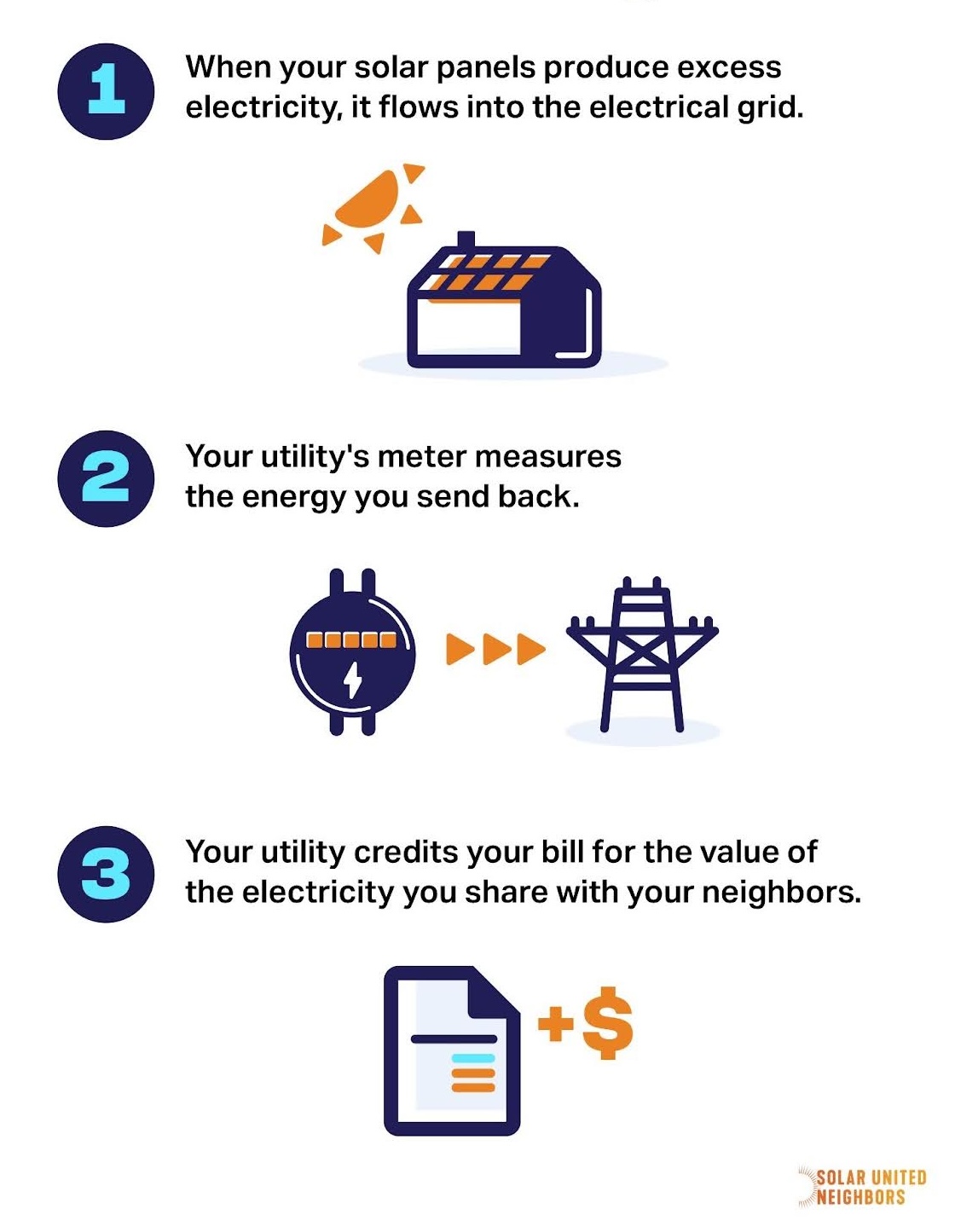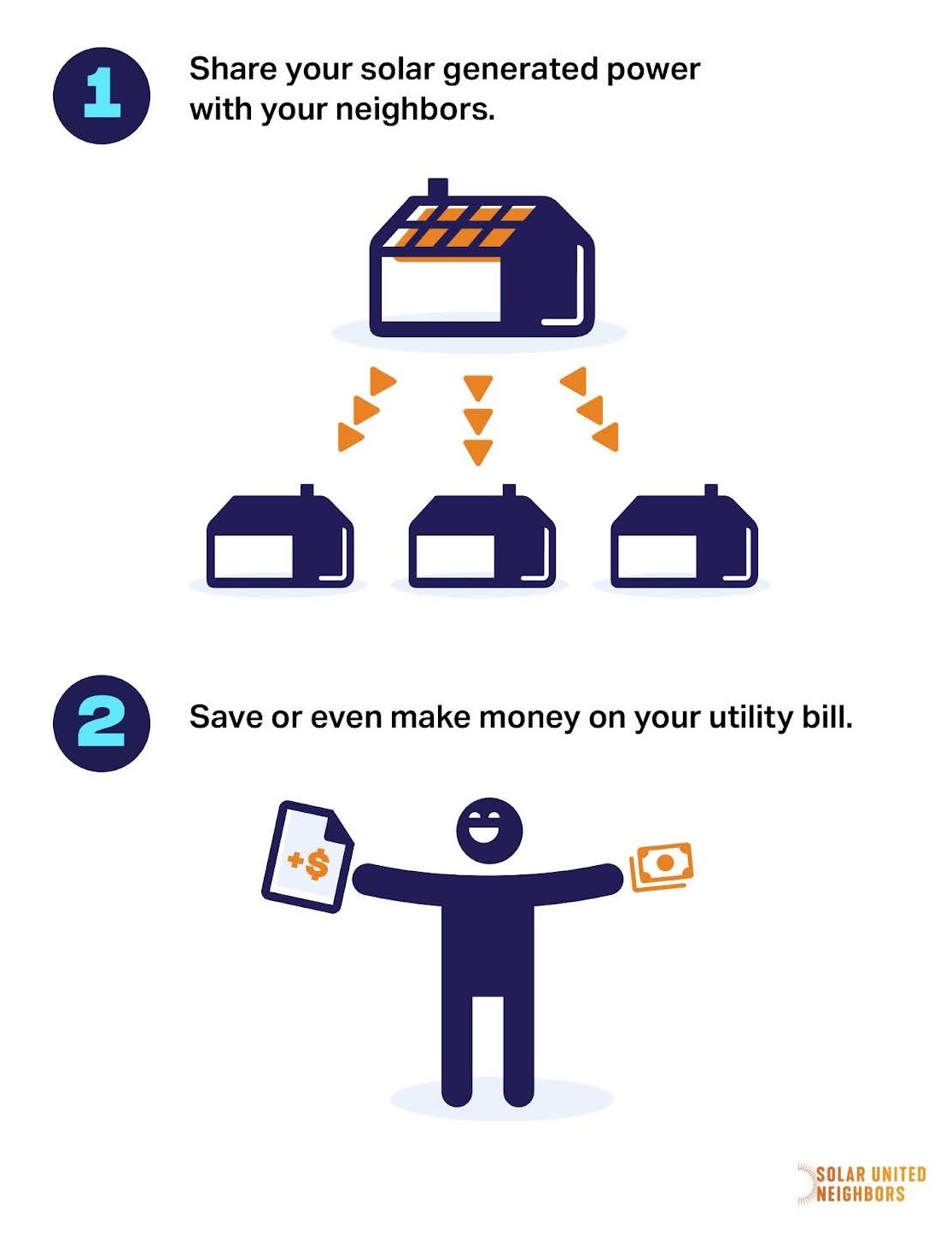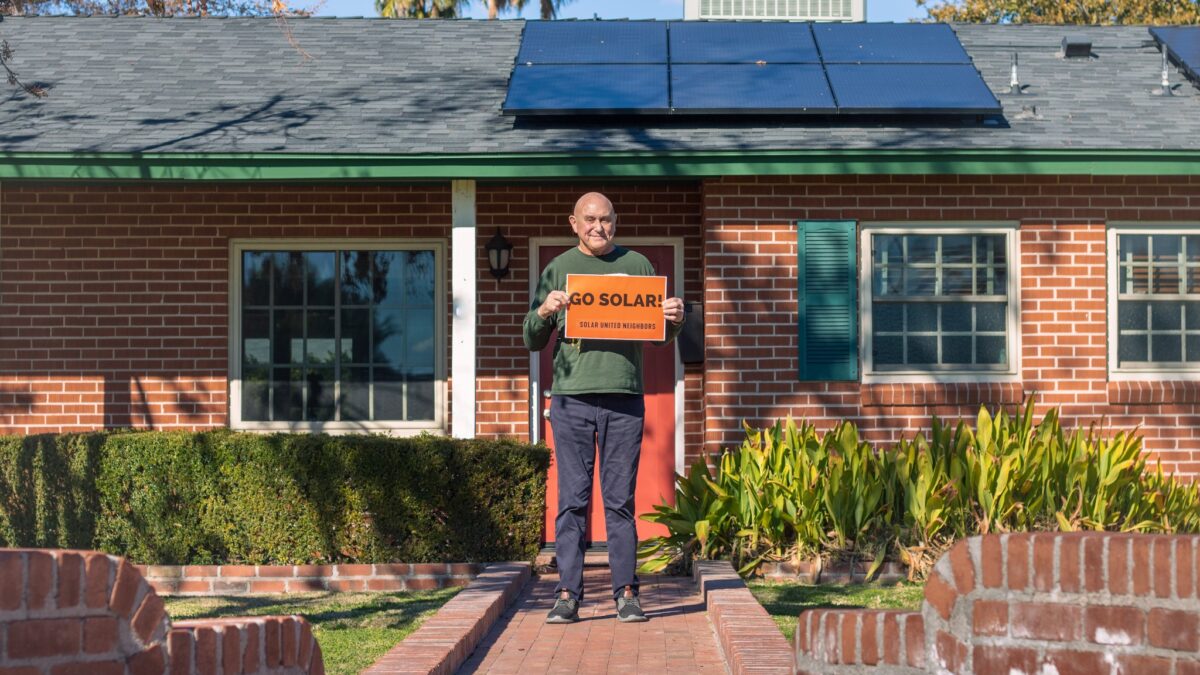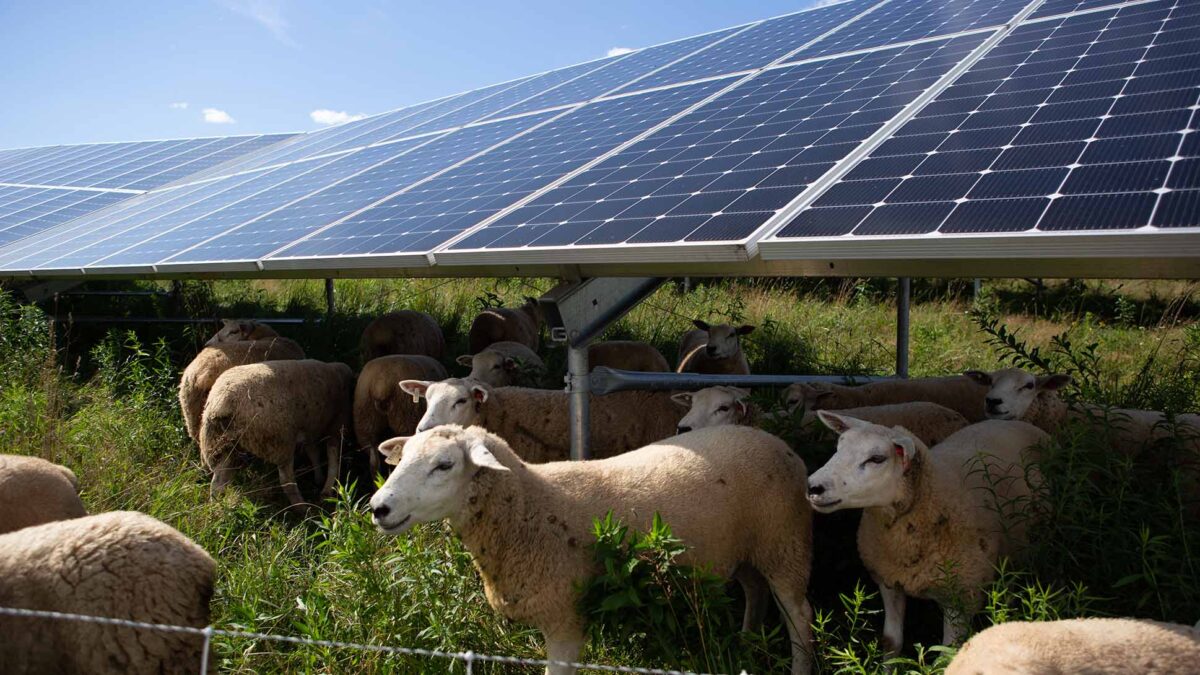Net metering explained: How to get paid back for your solar energy
- Factsheet

How net metering works

In the old days of analog meters, your utility meter would spin forward when you consumed electricity from the grid, and backward when you produced electricity from your solar array.
The meter would then “net out” the difference at the end of each month. The resulting bill would reflect the “net amount” that the meter reader saw on the dial.
The same concept holds true today — only with digital meters, not analog. If your monthly solar electricity production actually surpassed your utility electricity consumption, you’d end up with a negative bill credit. That credit may be carried over to the next month’s bill like rollover minutes on an old cell phone plan.
This arrangement is called net metering. Net metering is the policy that enables compensation for your solar electricity production, allowing you to offset your electric bill.
Each state has its own net metering policies. States’ rules vary in how and when they calculate the net metering credit, see below for state-specific information.
In most states, net metering allows for a one-to-one credit for your solar electricity. In other words, the electricity you produce is equal in value to the electricity you receive from your utility.
So, if your solar array produces one kWh of electricity, you can directly reduce your electric bill by one kWh. If that kWh of solar electricity is generated when you don’t need it, you’ll receive a credit for the full retail value of that kWh, which you can then use to offset your electricity consumption at a later time.
Benefits of Net Metering

Read more about your state’s net metering
- Arizona
- Colorado
- D.C.
- Florida
- Indiana
- Maryland
- Minnesota
- Ohio
- Pennsylvania
- Texas
- Virginia
- West Virginia
Interconnection: a key element to net metering
Interconnection is the process through which your utility connects your solar array to their grid, allowing power to flow between the two.
Before you can install your system, your utility must approve it. Your installer will submit the preliminary interconnection paperwork with your utility on your behalf, making sure the size and location of the solar array is approved by the utility.
Once your system is installed, your local jurisdiction will inspect it, and your installer will submit a request for interconnection to your utility.
Once approved, your utility will visit the installation and install a two-way meter, which allows for more accurate reading and reporting of your solar electricity production. Once the two-way meter is installed and your utility gives you formal “permission to operate,” you can flip the switch on your solar array.
Smooth, timely, and cost effective interconnection is a key element of net metering.
Some states are expanding net metering — others are attempting to roll it back.
- In 2025, West Virginians successfully fought back against the utility AEP’s proposal to slash the net metering rate by two thirds.
- In 2024, APCo attempted to cut net metering for Virginians, but we successfully preserved the full retail rate (1:1 credit) over a 12-month netting period!
- Our members filed complaints with the D.C. Public Service Commission to force PEPCO to ensure interconnection within 30 days.
Understanding your state’s policies is key to making sure your solar investment is valued properly and compensated fairly. When looking at net metering in your state, consider these key issues:
System capacity limit
Utilities or public commissions often limit the total system capacity (system size) you may install. These policies usually cap a system’s production at a certain percentage of your yearly electricity consumption, often between 100% and 150%.
Excess generation credit rate
When your system produces more electricity than you need, it’s called “excess generation” or “excess production.” And thanks to net metering, your utility has to compensate you for it.
Typically, utilities will compensate you for any excess electricity you produce on a 12-month cycle. Where this is the case, you can use your excess production credits for up to a year.
The rate of compensation for this excess solar production varies greatly between utilities. Many utilities credit excess generation at the full retail rate, enabling the “one-to-one” crediting discussed above.
However, some utilities are moving towards crediting excess generation at a lower rate. Where this is the case, you’ll want to install a system that will enable you to consume as much of your solar electricity on site as possible.
Statewide net metering cap
In many states, policies limit the total amount of energy that can be net metered. These rules harm states by hamstringing solar deployment. In many cases, legislators enacted net metering policies with a very low statewide cap (often less than 3% or 4% of total utility electricity sales). Many states are looking into raising this net metering cap in order to support the continued growth of solar.
Applicable utilities
Net metering laws and regulations can vary between utility territories. Municipal utilities, rural electric cooperatives, and investor-owned utilities may have different net metering policies and enforcement mechanisms.
For example, many state net metering programs are only enforced by state regulators for larger investor-owned utilities. Oftentimes, rural electric cooperatives and municipal electric authorities are exempted.
Policies expanding net metering
There are several types of net metering. Some states have passed laws that allow for virtual or aggregate net metering in order to broaden access to solar energy for residents and businesses.
Additional barriers
Within net metering, utilities and public service commissions (i.e. the utility regulators) may deploy additional barriers to make it harder for residents to go solar. These may include additional fees when interconnecting to the grid, lengthy approval processes, and confusing tariffs.
Source: Institute for Local Self Reliance
Types of Net MeteringAdditional types of net metering
The most common net metering arrangements for homes or businesses involve a single meter on a single property with energy credited to one bill or account. Think residential solar panels: they’re installed on a single property, they feed into a single electric meter, and that meter is associated with the single utility account of the homeowner.
Other types include aggregate and virtual net metering.
Aggregate net metering
This common policy allows a solar owner with more than one electric meter on their property to credit their surplus solar electricity from one meter to another meter on the same property.
Aggregate net metering is most common on farms, and is commonly referred to as “Agricultural Net Metering.” A farm may have multiple buildings (each with its own electric meter), of which only one roof is good for solar. Oftentimes, that good-for-solar building may have very little electric demand (e.g. a barn).
With aggregate net metering, the surplus electricity produced at that building’s meter can be credited to one of the other on-site buildings that have higher demand (like a house). In many states, aggregate net metering is limited to farms.
Tenant aggregation allows multiple occupants of a single building to share electricity or receive proportional credit from an on-site, shared installation. Seventeen states have meter aggregation policies.
Virtual net metering
Virtual net metering allows for compensation to community solar subscribers. Multiple utility customers (or “subscribers”) sign up to receive credit for the electrical output of a single solar project somewhere in their community.
With community solar, virtual net metering provides subscribers with a credit on their electric bill. The size of your share determines how much credit you receive.Fewer than 20 states have virtual net metering policies.
More resources
Common utility billing questions for new solar homeowners
Database of State Incentives for Renewables & Efficiency (DSIRE)
Fighting the Myth of the Solar Cost Shift
Reversing the grid
State Net Metering Policies overview
Financial Impacts of Net-Metered PV on Utilities and Ratepayers: A Scoping Study of Two Prototypical U.S. Utilities
Two victories for net metering
Punishing solar customers for disrupting outdated electric model is wrong
Support our work
SUN activates solar owners to defend against net metering attacks all over the U.S. Help us in this fight!
Learn more

Go Solar Guide

The value of solar for everyone

Starting a community solar project in your community: Community-led solar
Get the latest on solar straight to your inbox.
Fight for your solar rights.
Everyone has the right to go solar. Spread the sunshine nationwide and in your local community by taking action, joining events, and more.
